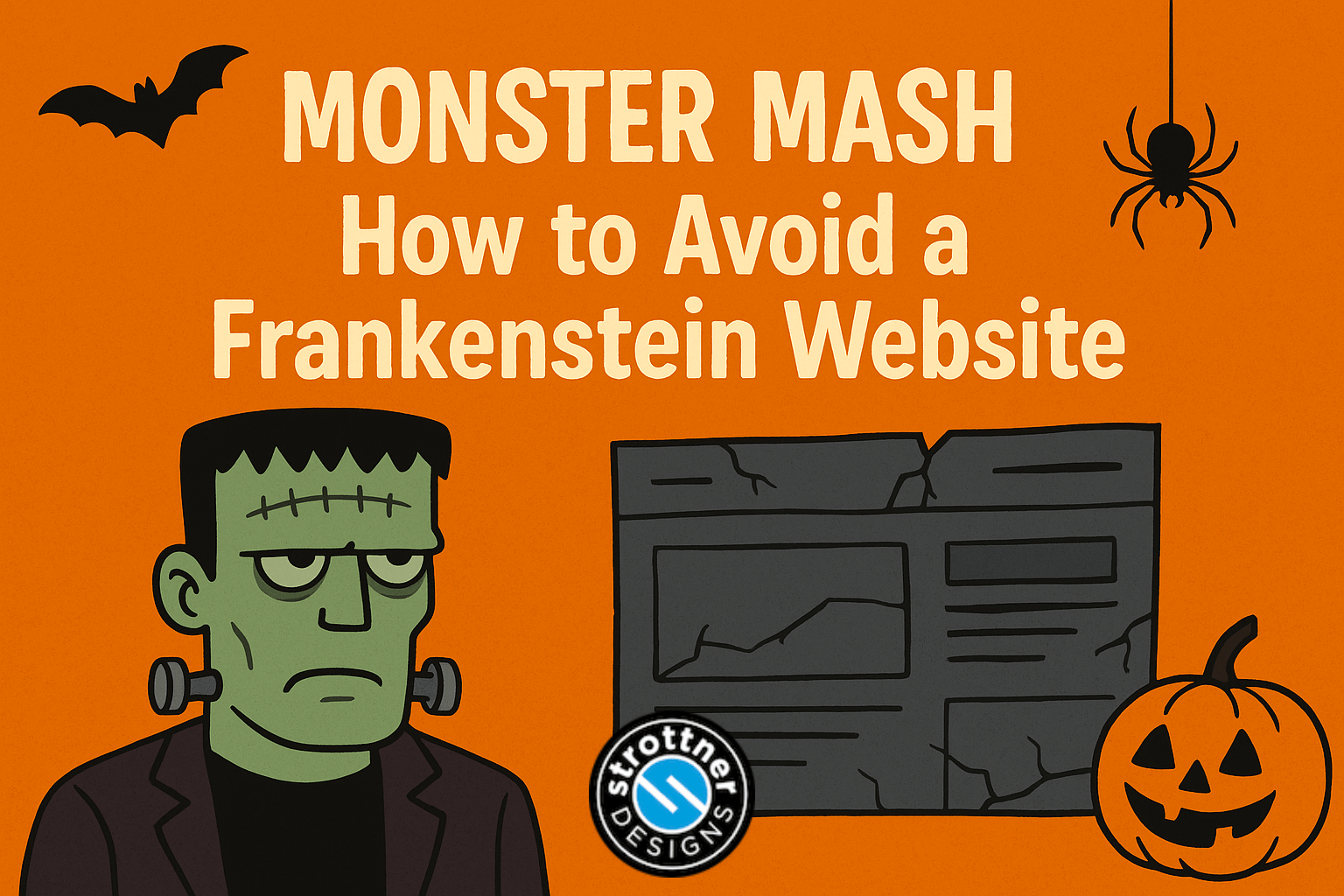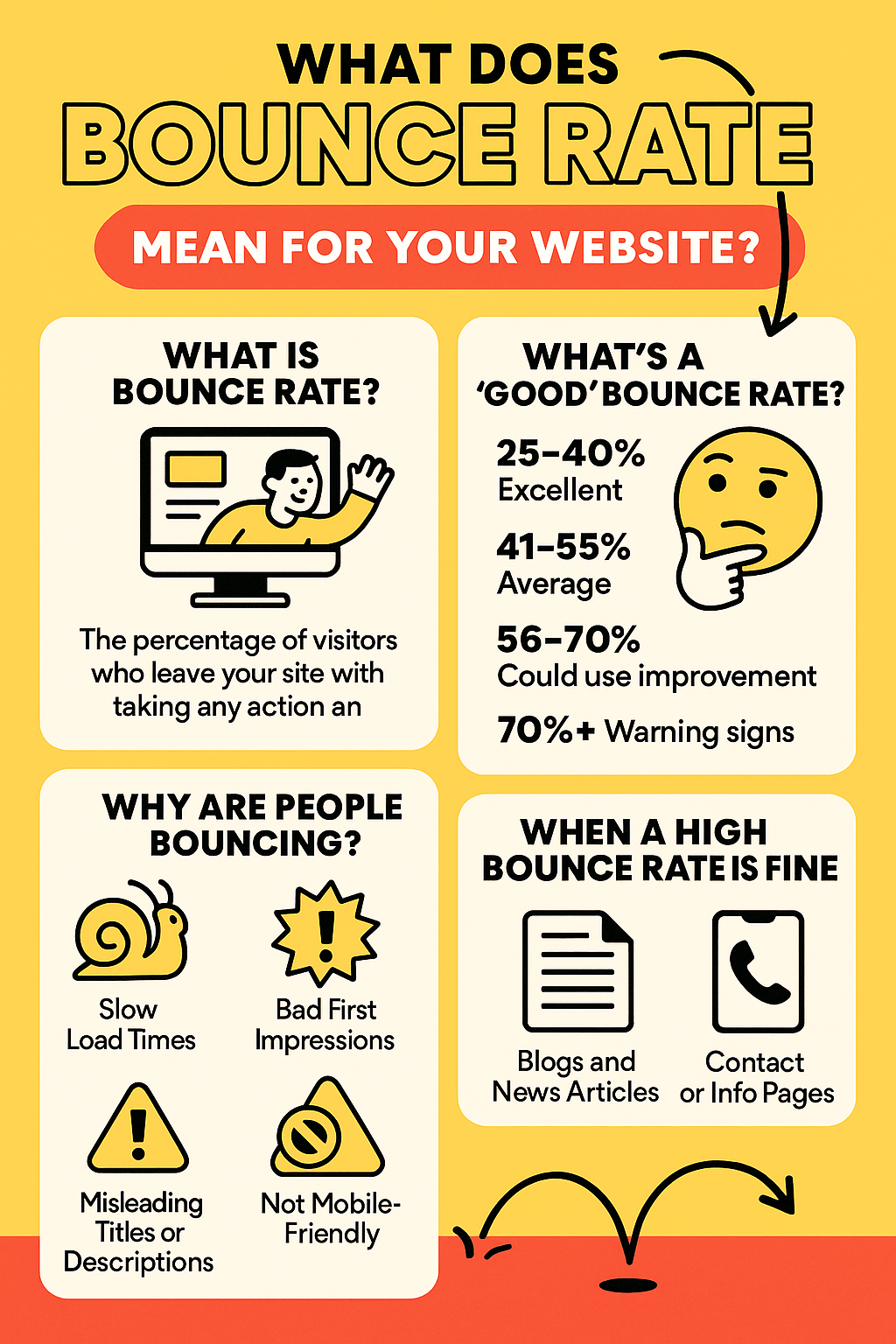
Imagine you throw a party. You’ve got snacks, music, fancy lights, and even a dog wearing sunglasses. But the moment guests arrive, they look around, shrug, and leave without touching the guacamole. That, my friend, is your bounce rate in action.
In the world of websites, a high bounce rate is the digital equivalent of someone walking into your homepage, deciding it’s not for them, and ghosting you within seconds. It stings. But more importantly—it’s telling you something.
So, what exactly does bounce rate mean, and should you panic if yours is climbing like a squirrel on espresso? Let’s unpack it.
Bounce rate is the percentage of visitors who land on a page of your website and then leave without clicking anything else or visiting another page. One and done. They came, they saw, they bailed.
For example, if 100 people visit your homepage and 60 of them leave without exploring further, your bounce rate is 60%.
Not always. A high bounce rate might mean:
Your site loads too slowly.
The content isn’t what people expected.
The design scared people away.
Or, believe it or not, that visitors found exactly what they needed and left satisfied.
So while bounce rate is a useful metric, it doesn’t always shout “disaster.” Sometimes it just whispers, “Mission complete.”
Ah, the golden question. Truth is, “good” is a moving target depending on what kind of site you run.
Here’s a ballpark breakdown:
25–40%: Excellent (this is rare—like a unicorn on rollerblades).
41–55%: Average and generally healthy.
56–70%: Room for improvement depending on your goals.
70%+: Warning signs—unless your site is purpose-built for single-page visits.
If your website exists to drive action—like product purchases, newsletter signups, or quote requests—then a high bounce rate is a red flag flapping in the wind.
On the flip side, if your visitors are reading a blog post and leaving after they get the info they needed, then a high rate might be just fine. Context matters.
Let’s explore the digital turn-offs that could be sending visitors packing.
People aren’t patient online. If your site takes forever to load, most folks will tap out before they even see your fancy banner.
If your homepage looks chaotic, confusing, or like a relic from the dial-up days, visitors may click away before giving it a second glance.
If your headline promises the secrets to eternal youth and your content delivers “drink more water,” expect readers to hit the back button with the speed of regret.
Most web traffic now comes from phones. If your site doesn’t play nice with small screens, people won’t stick around to pinch and zoom.
Big blocks of unbroken text are a known enemy of the internet reader. If your page reads like a user manual for a spaceship, visitors will abandon ship.

Let’s not throw the data out with the bathwater. Sometimes a high bounce rate is exactly what you want.
Blogs and News Articles: A reader lands on a post, reads it, and leaves. Job done.
Single-Page Sites: If your entire site lives on one page, bouncing is inevitable.
Contact or Info Pages: Someone searches for your phone number, finds it, and goes back to scrolling cat videos.
In these cases, bounce rate doesn’t reflect failure—it reflects focus.
To get the full picture, pair bounce rate with metrics like time on page, scroll depth, and conversion actions (like clicking a call button or downloading a PDF). These give richer insights into what visitors are actually doing before they bounce.
Want to play data detective? Here are a few trusty tools:
Google Analytics: The OG of web data. It shows bounce rates for individual pages and overall traffic.
Hotjar / Crazy Egg: These tools provide heatmaps and session recordings, so you can see why people might be leaving.
Google PageSpeed Insights: Measures your site’s speed—an often overlooked bounce rate driver.
Think of these tools as your digital surveillance system—minus the creepy part.
Bounce rate isn’t just a cold number—it’s a story about how people experience your website. It shows whether they’re finding what they came for or running into friction that sends them packing.
So don’t obsess over hitting some mythical “perfect” percentage. Instead, ask smarter questions:
Are people leaving before engaging with your content?
Are the right users visiting the right pages?
Are there patterns in high-bounce pages you can learn from?
And most importantly: don’t judge a single number in isolation. Your website is a living, breathing thing (well, sort of), and this is just one vital sign.
In our next article, we’ll break down how to lower your bounce rate and make your site so sticky it’s basically digital Velcro. Until then, keep an eye on those numbers—and maybe give your homepage a little extra love.
Interested in a new site and SEO, or just a new site? Visit Home of the Free Website to learn how we can build you a free or affordable site.
Privacy Policy | Sitemap | Terms of Use